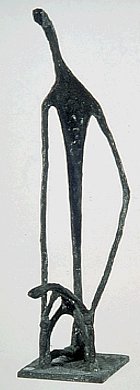|
German Epilepsy Museum Kork 
German Epilepsy Museum Kork www.epilepsiemuseum.de |
Most people with epilepsy are able to live completely independent lives in spite of their illness and can organize their working and social life without the help of others; apart from the occasional epileptic seizures which they have, they are quite normal. Some epileptic people, especially children or people who have other disorders in addition to their epilepsy (e.g. they are handicapped) need the help of other people. The statue shows a child with epilepsy whose hand is being held by a helper (the mother or father?) and who is being supported as it makes its first attempts at walking. The difference in size between the two people in the statue signalises on the one hand the sick child's need for help and protection, and on the other hand the active help and the safety which the helper provides. |

